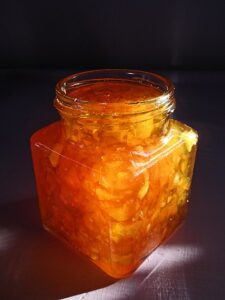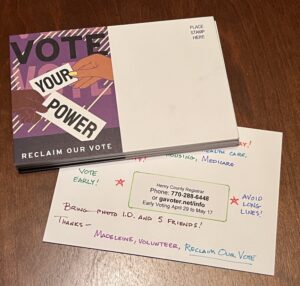You may have noticed that, last week, food entered the conversation about a book. When I tell everyone with much sobriety that I’m an ethnohistorian, my friends laugh. Ethnohistory includes food, as they know very well indeed. I don’t merely feed friends historical artefacts, I once had a food history blog. It’s simple cause and effect. No-one wanted to hear about the narratives that are my intellectual heartland, but everyone wanted to try the food mentioned in them.
I do both. I read and analyse and I cook and analyse and it’s an enormous amount of fun. Your post this week, then, is a piece I wrote for Bibliobuffet, a US online literary magazine, during my 3 year stay with them. I still miss the editors – they were wonderful to work with. I raise a theoretical glass of the best Ancient Greek diluted wine in their honour.
What I’m actually drinking tonight is vinegar water from 19th century children’s books. It should be raspberry vinegar, to be fair, but I wasn’t trying to replicate North American children’s books. I am trying to work out the difference between Polish and Australian vinegar. In books for adults, vinegar water is often touted as handy for some forms of indigestion and it is, which is a useful side effect of this particular historical food exploration.
Interpreting Foodways
Plantagenet England has one of the great cuisines. We don’t know a great deal about the food eaten everyday by ordinary people, and we have far more information for the fifteenth century than for the twelfth, but the best food on the table during that period and the most outstanding menu is some of the best food anywhere.
All but one of my favourite medieval dishes come from English manuscripts. These manuscripts are often regarded as French, because the language and the food style was French but there are differences between English and French food, to my mind. The English seem to have been cleverer with spices and to be far more aware of the look of the food: contrasting colours and clever presentation play a part in making the food delightful. Pomesmoille is apples and almond and can be made as a custard or as fresh and even crunchy. Crespez are deep-fried pancakes cookable almost instantly.
I begin my food history classes with this explanation, illustrated with recipes. I then spend session after session looking into the nature of the food: how it was cooked, where ingredients came from, what the manuscripts were like, how to interpret recipes and, most importantly, that my grand statements about the glory of the cuisine can be contradicted with accuracy and can still be precisely correct.
Despite the great interest so many of us have in this period of English history, it was before the time of printed cookbooks. We don’t have representative recipes, only occasional recipes. We don’t know what cooks made every day, only the food that a few people thought deserved writing down. The further back in time we go during the time of the Plantagenets, the less information we have and the more we rely on small amounts of data to interpret large aspects of food culture. We know a great deal, and at the same time, we don’t know nearly enough to make firm and definite conclusions.
Food history requires the mind of Sherlock Holmes alongside a vast raft of technical skills. And with all that, we have huge gaps in our knowledge. This doesn’t mean we don’t have knowledge. We have a great deal. We can argue for this position or that using the known cookbooks, using evidence from literature and from archival records, using the amazing amount of food-related archaeological material that has survived. The problem is bringing it together.
Ten years ago I thought I knew, and I told everyone who cared to listen what a glorious cuisine it was. I still suspect it might be, but… I want more evidence.
What happened was that I read Bridget Ann Henisch’s The Medieval Cook. Henish is one of the outstanding scholars in the field. She knows her stuff. And yet, in her book, she took material from this year or from that, evidence from this quarter and the other. Sometimes one part of her evidence was compatible with another and sometimes I stopped and wondered how on earth she could create an overview using just a few pieces of evidence that were centuries apart. None of her other writing does this, but The Medieval Cook is a popular overview and it’s very tempting to bring everything together and to show that we have an understanding of the period. That’s what books about the Middle Ages are for, to communicate an understanding. Audiences generally ask for firm and definite conclusions as part of this understanding.
I wrote the chapter on food in The Middle Ages Unlocked. I had much less material to draw on than Henisch, for The Middle Ages Unlocked covers a lot less time. I wrote very cautiously. “I don’t know this,” I found myself saying about this and about that, and did more research and discovered that no-one really knew this. At one stage I wrote a list of subjects that I thought I knew but had to doubt because, when I looked for the evidence, what I found was yet another general conclusion drawn from The Forme of Cury (possibly the most-used medieval cookbook for people wanting to reconstruct English food) or assumptions about home gardens in Sussex drawn from what was grown in Paris.
I took my list into class and I asked students, “How much do you know about the food we eat, here, in Canberra, in the twenty-first century?” The answers were enlightening. They helped me understand how I and so many other people can say “We know this cuisine” about Plantagenet cooking when, really, we only know some things about it.
Some students used their home cooking as the absolute arbiter of normal food for Canberra. Others used Women’s Weekly cookbooks. Occasionally, a student would collect data from other students and say “This composite, that’s how we need to see Canberra’s food.” These data-oriented students were the ones who paid attention to my original discussion about the method of studying food history: it’s data based. And our database is insufficient.
Most scholars realise this most of the time and try to talk about what we can know, and to limit claims. Henisch is one of the good scholars and this is how she normally works. The shape and content of The Medieval Cook, however, is the shape and story of the Middle Ages for a more popular audience. It’s a different type of story about the Middle Ages. Far easier to read. Far more entertaining. Far easier to find problems with.
We have a set of archetypal views of the Middle Ages. Popular books will often take one or another of them, because they’re far easier to write about than a more sophisticated (read ‘crazy-complicated’) analysis. Those archetypal views, in food terms, are like the Canberra students who think that every Canberra family eats like their own, or that Women’s Weekly cookbooks represent Canberra cooking. There is truth in them, for some people eat like that student’s family and a lot of people learn cooking from the Women’s Weekly cookbooks. There’s knowledge in this approach. Sometimes there’s very good knowledge in this approach. Understanding is harder.
What I’ve done is to keep all my favourite recipes. I’ll make pomesmoille whenever my favourite apples are in season, and I’ll give all my students my favourite joke about crespez being medieval junk food but… I teach all about those data sources and how to interpret them and send students to them whenever I can. I encourage them to find more data sources (archaeological reports and archival material have so much material in them!) and to help build up a more realistic picture of complex foodways over a long period of time. Students who want easy answers hate me for this. There are fewer soundbites. It’s much more exciting, however, for it’s something that anyone can do: build up a personal and sophisticated understanding of foodways. Learn to see the Middle Ages as continually surprising, continually exciting.




 During the early days of Covid (y’all remember the early days of Covid, right?) I realized that if I didn’t do something I would get…a little frantic. I have a well managed tendency to anxiety, counterbalanced by the belief that running in circles flapping my arms and squealing does nothing to improve the situation. If I can do something–even a small something–to ameliorate an anxietous situation, I feel better. I think of this as tending a Victory Garden*, after the WW1 and WW2 practice of home gardening to reduce the strain on supply chains during the war.
During the early days of Covid (y’all remember the early days of Covid, right?) I realized that if I didn’t do something I would get…a little frantic. I have a well managed tendency to anxiety, counterbalanced by the belief that running in circles flapping my arms and squealing does nothing to improve the situation. If I can do something–even a small something–to ameliorate an anxietous situation, I feel better. I think of this as tending a Victory Garden*, after the WW1 and WW2 practice of home gardening to reduce the strain on supply chains during the war. 